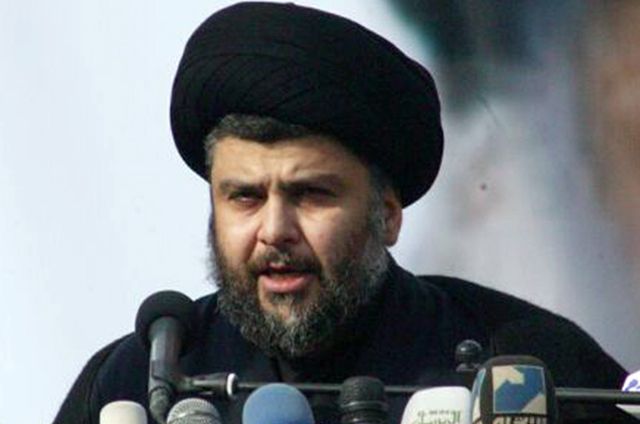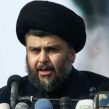
Muqtada al-Sadr and Iran Use “Soft Power” to Pursue Objectives in Iraq
Publication: Terrorism Monitor Volume: 9 Issue: 5
By:

The return of Muqtada al-Sadr to Iraq after more than three years of self-imposed exile and his unexpected January 21 departure for Iran only two weeks later have provoked speculation over the security implications of his activities in Iraq and his precise relations with Iran (Fars News Agency, January 22; Gulf News January 21; Tehran Times, January 23). In light of a recent series of terrorist attacks in the shrine-city of Karbala during the Arbain religious festival (marking the passage of 40 days after the anniversary of the death of Imam Hussein), al-Sadr’s departure has raised concerns about the Sadrist militia and the possible re-emergence of the sectarian conflict that engulfed the country in 2006-2007 (al-Jazeera, January 21; IRNA, January 25). In many ways, the spate of bombings can be seen as the latest attempt by the Sunni militant factions to incite sectarian friction and perhaps provoke the Sadrists to retaliate. However, the security breakdown which followed with al-Sadr’s surprise departure to Iran could also be an indication of the extent to which the Sadrist movement as a political-military force continues to undergo a major organizational transformation, with its leadership base becoming more entrenched in Iran.
An Unexplained and Hasty Departure
From the perspective of his opponents, al-Sadr’s sudden trip to Iran can be explained in terms of evading legal proceedings related to the assassination of Sayyid Abdul Majid al-Khoei, a prominent Iraqi Shi’a scholar who was killed by a mob (believed to be followers of al-Sadr) at a Baghdad mosque in 2003. It was after the issuing of a warrant for al-Sadr’s arrest in connection with the murder that his Mahdist militia came to his defense and engaged in a bloody war against U.S. and Iraqi government forces. Upon al-Sadr’s return to Iraq, the family of al-Khoei challenged the Iraqi government over its failure to detain the young cleric, accusing some members of the parliament and the judiciary of purposely avoiding enforcement of the criminal investigation process (Asharq al-Awsat, January 6). Al-Sadr’s supporters, however, argue that their leader left Iraq because of American attempts to assassinate him (Fars, January 22). According to one of his top representatives, al-Sadr left for Iran in order to kick off an important regional tour, which he has done several times in the last two years in order to bolster his image as a statesmen (Asharq al-Awsat, January 23). The puzzle is, then, why so many of his followers, including his top representatives, believed that after his return to Iraq al-Sadr would reside in Najaf, possibly studying under an Iraqi-based Grand Ayatollah (al-Hayat, January 13). Did al-Sadr have plans to stay in Iraq and supervise his movement’s return to power? If not, then what are the security implications of his return to Iran?
A careful review of reports from the earlier days of his return to Iraq shows that al-Sadr had plans to reside in Iraq with the objective of playing a more direct role in Iraq’s political and security matters (al-Quds al-Arabi, January 4). Despite claims by his representatives that he is in full command of his followers while studying in Iran, al-Sadr’s decision to reside in Najaf would have bolstered his influence as a regional political figure with religious authority (al-Alam, January 15). His departure to Iran, therefore, appears to be a sudden change of plan, perhaps a somewhat hasty response to the violence that erupted in Karbala, but more likely because of threats from splinter groups within his former militia.
The Mahdist Factions
Although Mahdist splinter groups have largely remained hidden from the sight of security forces, they tend to make abrupt appearances to remind observers of the internal challenges al-Sadr faces in Iraq. Examples of such threats emerged in 2010, when Jaysh al-Mahdi splinter groups with names such as “Guardians of Religion” and “Men of the Sword” began imposing codes of morality and controlling territories in various cities like Nasriya (Tabnak, August 16, 2010). The Ahrar faction, as another example, still remains one of the most formidable challenges to al-Sadr (Aswat al-Iraq, October 17, 2010). Although the cleric’s representatives have downplayed their significance, these splinter groups were likely displeased with the return of their former leader, especially his January 8 speech in Najaf where he talked about cooperation with the new government and peaceful resistance to U.S. occupation (al-Arabiya, January 8). Since most splinter factions began to emerge when al-Sadr began his collaboration with the government of Nuri al-Maliki in 2005 onwards, the Najaf speech only reconfirmed the view shared by many of his enemies that the cleric is a traitor for his ties to the U.S. occupiers and his links with Iran.
However, despite internal threats to his security, al-Sadr maintains considerable political capital in Iraq. The December 2010 deal to join the new coalition government secured his movement eight governmental ministries, most notably in education (considered a vital portfolio by Islamists), along with 39 seats in parliament (al-Jazeera, January 5). During his two-week stay in Iraq, al-Sadr showed significant political clout as Iraqi politicians, including President Jalal Talabani, travelled to meet him in Najaf (Fars, January 15). Among the many official meetings, the most important one took place on January 13 between al-Sadr and Grand Ayatollah Sistani (al-Sumaria, January 14; Fars, January 14). During this meeting, Sistani was reportedly impressed by al-Sadr’s populist agenda, particularly his support in the Iraqi parliament for public housing for the poor (al-Hayat, January 14). The meetings helped al-Sadr shed the image of a radical figure while solidifying his status as a major player in the new coalition government.
Exerting “Soft Power”
In terms of security implications, al-Sadr appears to underline his broader strategy by expanding his “soft power” capabilities (i.e. attaining objectives through attraction or co-opting the opposition rather than using violence) with the support of Tehran. The attempt to transform the Mahdi Army into the Mumahidun (“Those Who Pave the Path”) with a mission to provide cultural and public services to Iraqis set off a general re-structuring of the Sadrist movement into a political force in 2008. Al-Sadr’s latest attempt to bolster his cultural-political credentials may be viewed as part of a broader Iranian regional policy (see Terrorism Monitor, September 4, 2008). Rumors of his close scholarly ties with supreme leader Ayatollah Ali Khameini and Ayatollah Mesbah Yazadi, a hardliner cleric with a messianic outlook, seem to indicate al-Sadr has grown increasingly dependent on Iran since he left Iraq to pursue his studies in Qom in 2008 (see Terrorism Monitor, February 5, 2008).
Unlike 2003-2004, when he challenged Shi’a authorities in Najaf and Tehran, al-Sadr is now careful to mind the limits of his authority in public. This is perhaps intended to tame his younger followers by respecting the traditions of Shia orthodoxy, a far cry from his 2003 claims to messianic-like authority, which angered the clerical establishment. The long-term pursuit of becoming an ayatollah appears to be more important to al-Sadr than simply counting the immediate political gains he can enjoy by staying in Iraq. One can argue that despite his possible plans to stay in Najaf, al-Sadr is determined to become a recognized, high-ranking cleric in the Shi’a religious community with the benefit of access to major sources of financial capital primarily under the control of high-ranking clerics in Najaf. As his refusal to lead the Friday Prayer as a low-level cleric in Kufa indicates, he has no desire to challenge long-held traditions of the clerical establishment and transgress the authority of his clerical superiors and elders (Fars, January 15).
Al-Sadr’s soft-power strategy can be associated with Iran’s “Soft War” strategy, which became an integral part of Tehran’s regional policy in the months after the disputed 2009 elections (see Terrorism Monitor, June 12, 2010). As the Islamic Republic shifts attention to soft structures such as education and religious institutions to bolster its image and influence inside and outside Iran, al-Sadr also appears to follow a similar strategy with a new focus on building political and cultural blocks in Iraq, especially through the Ministry of Education his followers now control. It is also likely that some of his loyal former officers are taking up the task of software training activities in the cultural and educational domain under Iranian supervision. Since December 2010, three of the author’s Sadrist informants in Qom, all former Mahdi Army members, have been called on to return to Iraq after three years in Iran. [1] With the establishment along the nation’s borders of five new Iranian military bases charged with the task of countering new U.S. threats, it is likely that some Sadrist officers are undergoing training in an overhauled military structure (Mehr, January 22; Tehran Times, January 23). More remarkable is the way al-Sadr’s own security force is also undergoing some sort of training and even a refashioning under Iranian supervision. It is worth noting that during the Najaf speech, al-Sadr’s body guards wore grey suits, a distinctive feature of the Iranian security agents trained by the Iranian Revolutionary Guard’s (IRGC) special security forces.
Conclusion
The long-term challenges to U.S. interests by the Islamic Republic remain complicated by a range of problematic factors, one of which is the continuous transformation of Shi’a Iraqi politics as Washington vies with Iran for influence in Baghdad. Since the disputed 2009 Iranian election, the Islamic Republic’s clerical rulers have become more reliant on the paramilitary force of the IRGC to maintain domestic influence and continue to appear as a regional power. The increasing monopolization of power by the paramilitary-intelligence complex has underlined a major shift in Tehran’s foreign policy outlook that could entail new challenges to the U.S. presence in Iraq. Sadr plays an integral role in Iran’s regional policy ambitions, as leader of perhaps the only Iraqi faction with a major popular base of support in Iraq that could tilt the country toward the side of Iran.
Al-Sadr’s role becomes even more important when it comes to the U.S. presence in Iraq. As for the extension of the American military presence beyond 2011, there appears to be little room for Washington to re-negotiate these terms, as al-Sadr would have considerable leverage over al-Maliki’s government (Fars News, January 9). Despite his call for peaceful resistance against the United States, al-Sadr still upholds an uncompromising stance towards American occupation of Iraq beyond 2011, which ultimately serves Tehran’s interests in preventing the United States from attacking its nuclear sites from military bases in Iraq. This uncompromising posture could entail the re-militarization of the Mahdi Army and the return of militia politics to Iraq if (or when) the United States decides to extend its stay.
Note:
1. Fieldwork, Qom, Iran, December 10, 2008.




